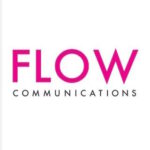
Did you know: the human brain processes sound at a higher speed than any of its other senses, making it a great tool to connect audiences with content and their emotions. Andreas Furtner who is the sound guru at Magnetic Storm uncovers the power of sound.
The human brain only needs 146msecs to react to sound. This is faster than touch (149 msecs), sight (189msecs) and taste (500 msecs). Think about bone-chilling scenes in horror movies, they only work if the sound is placed just after the visual imagery. Otherwise, the sound will give the surprise away, because the brain processes it faster than the visual stimuli.
Although it probably seems obvious that music can evoke emotions, it is to this day not 100% clear why. But scientists put it down to that music has been culturally created to sound like an emotionally expressive human. While it is not easy for us to see the human ingredients in the modulations of pitch, intensity, tempo and rhythm that make music, perhaps it is obvious to our auditory homunculus.
Sound is already used extensively in events, but it’s the next frontier in terms of experience design because of it’s focused, visceral, interactive and efficient.
At the recent launch of the Isuzu brand in Port Elizabeth, the Magnetic Storm creative team used sound to add ‘oomph’ to the great reveal. The brand’s theme music, which is Japanese in style, morphed into an unexpected hip hop track. By adding the unexpected you create the wow and build anticipation. Using technology, including the placement of speakers, you can bring a creative idea to life. Event directors can impregnate the live, in-person visual experience with far more meaning by using sound and acoustic trickery, compared to relying purly on visuals.
There are semiotics to sound. Strings convey warmth and scale, trumpets sound triumphant and so on. If you watch the BBC News, take note of the opening theme, there’s urgency created by the rhythm, gravitas of the coming content is highlighted with a degree of importance through trumpets and scale with the strings.
So how do you pick the right music?
There’s no formula, you simply have to consider what you’re objective is, the occasion, the visual it’s connected to, the desired ambiance and then sift through the right genre to find the right fit. Sometimes it may take more than just one kind of music to create the desired mood. For instance the music for an event might follow something like this:
- General, subtle background music for pre-event scene—setting. This could be just light music with no vocals, theme music or orchestral depending on your event. Music fills the gap between visual, light and activity.
- Introduction could be something more daring. If your event is geared towards attracting a younger crowd, then hip hop, club mixes and electronic would be a good choice. A good thumping beat is a great crowd puller. On the other hand, if it is a corporate occasion, you might want to consider something motivating or energising.
- Banging club mixes with a good DJ is ideal for daring, innovative product launches, keeping the momentum in the music builds anticipation. A good bass line with lots of drum play builds curiosity and hype. It makes people want to checkout what is happening.
So next time you pull an event together, don’t just play your favourite music, think about what you’re looking to achieve, how you can flip the expected on its head, and enjoy searching for music that gets emotions flying.
- MRF Unveils Latest MAPS® Data - 20th February 2025
- The BRC announces changes to the board and updates for 2025 - 17th December 2024
- Top 50 DSTV TV programmes – October 2024 - 12th November 2024



